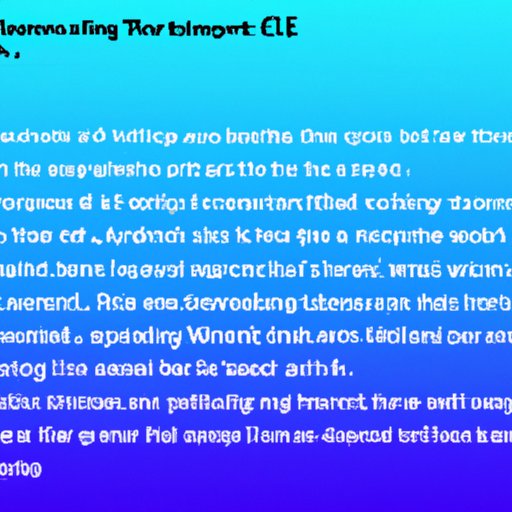Introduction
Writing is a complex process that requires a lot of practice and skill. Every writer needs to know how to effectively transition from one paragraph to another in order to keep the flow and structure of the writing. Starting a second paragraph can be difficult, but there are some tips and techniques that can help make the transition smoother. This article will explore how to start a second paragraph and provide examples to illustrate the points.

Building on the First Paragraph
When starting a second paragraph, it is important to introduce a new idea that builds on the first paragraph. This will help to keep the reader engaged and interested in the topic. A good way to do this is to ask a question that encourages readers to think deeper about the topic. For example, if the first paragraph discusses the importance of communication in relationships, the second paragraph could ask “What are the different forms of communication?” This question leads readers to explore the topic further and allows the writer to introduce a new idea.
Another way to start the second paragraph is to offer a quote or anecdote that relates to the topic. Quotes and anecdotes can help to add depth and interest to the writing and give readers a different perspective on the topic. For example, if the first paragraph discusses the importance of resilience in life, the second paragraph could begin with a quote like “Life isn’t about waiting for the storm to pass, it’s about learning to dance in the rain.” This quote gives readers an inspirational and uplifting message that they can relate to and helps to reinforce the point of the article.
In addition to quotes and anecdotes, providing an example can also help to illustrate the point of the article. Examples can help readers to visualize the concept and understand it better. For example, if the first paragraph discusses the importance of hard work, the second paragraph could provide an example of someone who achieved success through hard work and determination. This example helps readers to better understand the concept and gives them something to aspire to.
Finally, it is important to summarize the main points from the first paragraph before transitioning into the second paragraph. This will help to remind readers of the topic and prepare them for the next idea. Summarizing the main points also helps to tie the two paragraphs together and create a cohesive flow throughout the writing.
Transitioning to the Second Paragraph
Once the main points from the first paragraph have been summarized, the next step is to transition into the second paragraph. This can be done by stating a surprising statistic or fact that relates to the topic. For example, if the first paragraph discusses the importance of education, the second paragraph could begin with a statement like “According to recent studies, only 25% of children in developing countries have access to basic education.” This statement provides readers with a shocking statistic that encourages them to think deeper about the topic.
In addition to statistics and facts, beginning with a transition statement can also help to move the writing along. Transition statements can be used to introduce a new idea or to link two points together. For example, if the first paragraph discusses the importance of self-care, the second paragraph could begin with a transition statement like “Taking care of ourselves is not just about physical health – it is also about mental health.” This statement helps to bridge the two ideas and provides a smooth transition between the two paragraphs.
Conclusion
Starting a second paragraph can be challenging, but with the right tips and techniques, it can be done effectively. Introducing a new idea that builds on the first paragraph, asking questions that encourage readers to think deeper, offering quotes or anecdotes that relate to the topic, providing examples that illustrate the point of the article, and summarizing the main points from the first paragraph are all effective ways to start the second paragraph. In addition, beginning with a surprising statistic or fact, or a transition statement can also help to transition into the next topic. With these tips and techniques, anyone can learn how to start a second paragraph and make their writing more engaging and interesting.
(Note: Is this article not meeting your expectations? Do you have knowledge or insights to share? Unlock new opportunities and expand your reach by joining our authors team. Click Registration to join us and share your expertise with our readers.)
